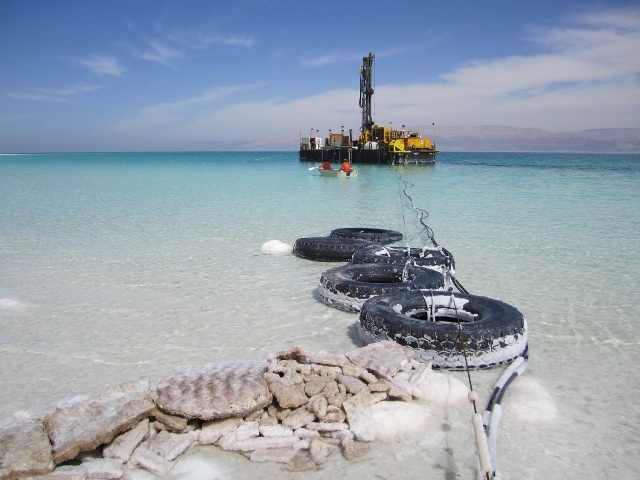As one of the most saline lakes
on Earth in an arid region, and the lowest point on Earth, the Dead Sea has
recorded climate change in the region over geological periods, with lake level
rises during wet periods and lake level drops during dry periods. Nevertheless,
until recently, there was no direct relationship between the lake composition
and regional climate change over geological time. Research carried out at
BGU, and in participation with the Geological Survey of Israel and the Hebrew University of Jerusalem, found a direct relationship between
hydrological and chemical changes in the Dead Sea over 220 thousand years, a
time interval covering two glacial and three interglacial periods on Earth. The research was accepted and published recently in a top geoscience journal, Geology.
The research focuses on
reconstructing climate conditions in the past by using pore water trapped
within sediments in the Dead Sea, and is part of the PhD research conducted by Elan
Levy from Prof. Orit Sivan's research group in BGU's Department of Geological andEnvironmental Sciences. In the deep drilling
project conducted under the umbrella of the International Continental DrillingProject (ICDP), and in cooperation with universities and research centers in
Israel and abroad, a drilled core of ~450 meters length was extracted during 2011.
The research group extracted pore fluids trapped in the drilled core sediments
and measured geochemical and isotopic parameters which shed light on climate
change over 220 thousand years.
The research results show that
the chemical composition of the deep lake follows global climate changes.
During glacial periods, when there was a drop in global temperatures, expansion
of ice around the Polar Regions, and a drop in oceanic sea level and
atmospheric carbon dioxide concentrations, there was dilution of the deep lake
that was accompanied by the dissolution of Halite salt. During the warmer
interglacial periods, when there was a rise in oceanic sea levels and
atmospheric carbon dioxide concentrations, the deep waters became more
concentrated and Halite salt was precipitated.
The similarity between the global
climate records and the pore water records from the Dead Sea core emphasizes a strong
relationship between rainfall and humidity in the region and global climate
changes, findings which are important for understanding and predicting climate
change in Israel and the central Levant. The results support modern observations
showing a relationship between the amount of rainfall in the region and North
Atlantic sea surface temperatures – during periods of relatively cold surface
water in the north ocean there is a relative increase in regional rainfall, and
a decrease in regional rainfall during relatively warm surface waters.
 Above:The drilling barge which extracted the sediment
Above:The drilling barge which extracted the sediment
Credit: Prof. Mordechai Stein – The Hebrew University
